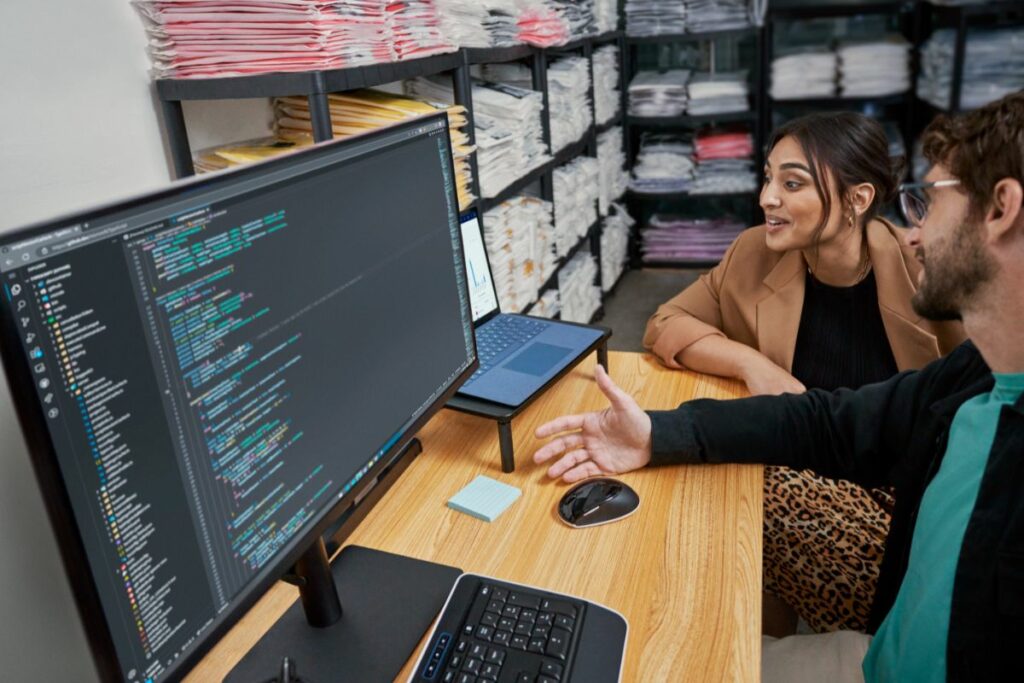Retailers must invest in new infrastructure and adopt new systems to support their operations – and explore all the new platforms available to them – but they forget their key business goals and customer requirements at their peril.
That was the overriding message from a retailer roundtable debate hosted in The City of London on 26 September by Retail Gazette and Amido, a technical consultancy and systems integrator working with a variety of retailers in the UK.
Covering a range of topics focused on the retail industry’s slow-moving shift from monolithic systems to a more flexible software and IT deployment, the breakfast event focused on how retailers’ tech teams are evolving and becoming more central to the overall success of the business.
Joining the conversation at 1 Lombard Street in the heart of London’s financial district were CEOs and digital decision makers from Arcadia, Farfetch-owned Browns Fashion, Carpetright, Debenhams, Firebox, French Connection, House of Fraser, New Look, Office, Ralph & Russo, Sainsbury’s and Watchshop.
Don’t kill the patient
A common theme expressed by delegates over breakfast was the need to align IT and business teams for the greater good of their organisations. There is no use in investing in technology for technology’s sake to replace old systems if the retailer has no defined strategy in place, it was argued.
That strategy may be supported by an unpredictable “test and learn approach” to investments, where new software or digital products are devised and launched as minimum viable products, but it was agreed there must be a clear direction of travel.
Lorenzo Moretti, CEO of shoe retailer Office, and one of several c-suite representatives around the table, said: “The key thing for every retail business to establish is ‘what is my strategy?’.
“Once you’ve got a focus and a plan you work out what you need to support that strategy – and that includes technology investment.”
Using a medical analogy to underline his point, he added: “If they’re trying to fix things with technology, retailers must not lose sight of what their customer needs. It’s all very well conducting a major heart and lung transplant, but in so many cases retailers go through this process only to find the patient is dead at the end of it all – the customer has moved elsewhere.”
Customer focus
Arguing that retailers need to be consumer centric and make decisions based on what is best for the customer often feels somewhat passé, but there is no getting away from the fact that today’s best performing UK retailers do just that. High sales growth retailers such as Asos, Boohoo, Hotel Chocolat, and JD Sports are listening to their shoppers and amending their proposition and infrastructure accordingly.
Robin Phillips, CEO of online retailer Watchshop and former digital director at Waitrose, Boots and Kurt Geiger, said: “As CEO, the key thing to establish is the purpose of the business, and then you put the building blocks – which includes technology solutions and new platforms – in place to meet that vision.
“At Waitrose, to ensure tech investment aligned with business strategy, I brought the IT and business teams together. It meant everything was done with the good of the business in mind, and investment decisions were measured against c-suite goals and costed up accordingly.”
He acknowledged not all retailers find this easy and can be distracted by other targets.
“It can be more difficult to make the right technology investments at a larger listed retailer, because so much of the focus is on achieving the quarterly numbers,” Phillips noted.
“Technology’s the easy bit”
Indeed, larger retailers can often find themselves in a tangle when it comes to technology investment, as several of the stories shared around the table alluded to.
According to comments made at the event, initiatives to replace or update creaking, legacy systems can get under way, only for those running the projects to realise they are just moving from one monolithic system to another and running into similar constraints.
This is where the case for microservices has some weight, according to Amido and several other roundtable attendees favouring this approach.
With microservices, a large application or system is built as a suite of modular components or services – and it effectively enables businesses to choose the right technology at the right time to make gradual infrastructure changes. It circumnavigates ripping up and replacing long-established core systems in one fell swoop.
Supporting the microservices approach, Marcel Borlin, CTO at Carpetright, said: “At many retail businesses, long-established systems are continually tweaked to keep up with new demands but then they run out of road.”
However, he added, success in changing IT methods relies on the people within the organisation getting up to speed quickly.
“Everyone needs a new job description now due to the change of systems and the evolution of internal processes,” he noted.
“Technology is the easy bit, but what retailers find challenging is ensuring they explain to the staff how to use new platforms and systems, and ensure they take them on the journey with them.”
The roundtable discussions suggested retailers are looking to become more flexible and ensure they are in a better position to react to fast-changing consumer demands. But a complex mix of IT, organisational, and people change is required.
Chris Priest, principal consultant at Amido, said: “Some retailers are starting expensive technology projects and ploughing millions of pounds into new systems but do not see the rapid returns they would like, and end up committed to a project that isn’t delivering what is ultimately needed.
“It doesn’t have to be this way, and microservices offer a suitable and often cost-effective way forward for preventing these issues from occurring. But whatever approach retailers take, it’s clear they need a good understanding of who their customer is and what the business wants to achieve before choosing the technology and systems to fit.”
Key roundtable takeaways
- Retailers keen to modernise but they feel restrained
The appetite for change within retail is strong, but sign-off from the board for technology and infrastructure modernisation remains a challenge.
- Don’t fall into the trap of tech for tech’s sake
Each retailer technology investment decision needs to be made with the interests of the business and customer base in mind – and there’s no one silver bullet to enact change.
- Move forward with microservices
Although significant infrastructure change seems daunting and costly, incremental change using microservices brings quick wins which finance next stages of development.
Click here to sign up to Retail Gazette‘s free daily email newsletter


















